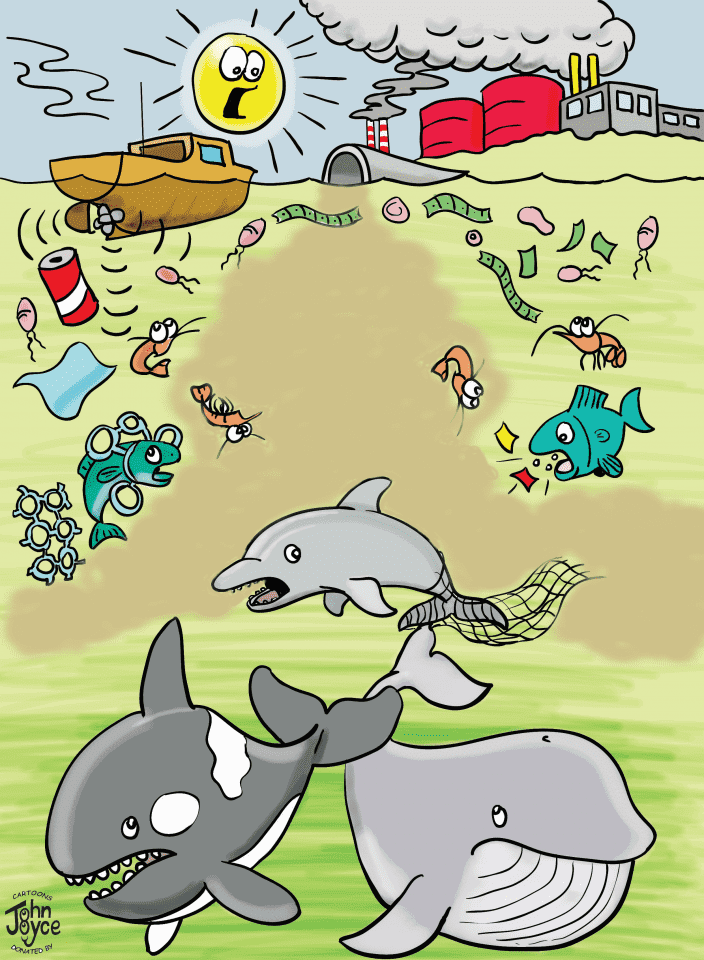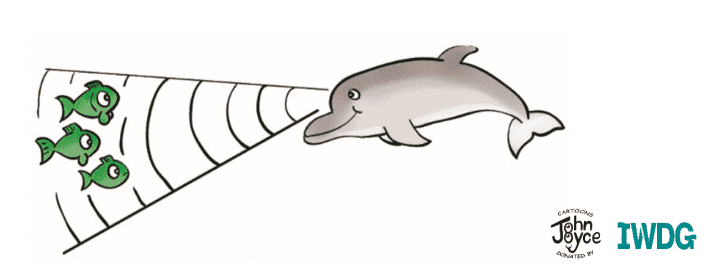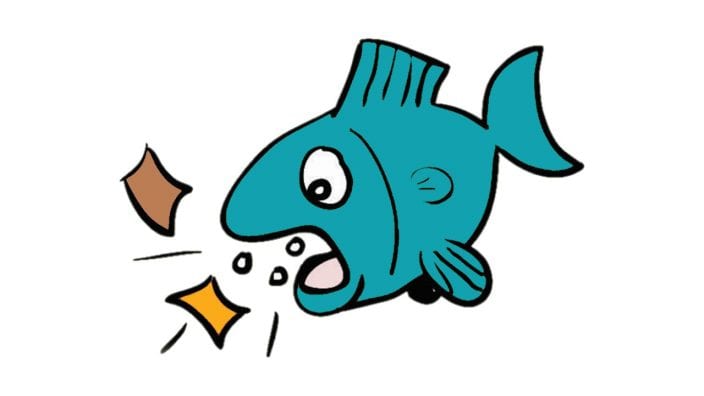If you think the ocean isn’t important, imagine Earth without it. Mars comes to mind. No ocean, no life support system.
![]()
Sylvia Earle

Noise pollution
Noise pollution refers to any man made noise such as shipping, military sonar, seismic exploration and construction.
These background noises mask sounds produced by whales and dolphins, thereby affecting communication between cetaceans.
Dolphins live in very complex, social structures and if they can’t hear one another, they can’t communicate with one another, making them more vulnerable.
Noise pollution can damage cetaceans hearing. This can result in stress and even confusion which could result in strandings on beaches.

Marine Debris
Scientists have estimated that between 40-80% of marine debris is plastic. Much of this is packaging, carrier bags and other domestic items, that have originated from land.
When a marine mammal eats plastic, it can clog the digestive system. Cetacean species that use suction feeding, such as sperm whales, are thought to be more at risk of ingesting plastic then species that use other feeding strategies. However, globally, thirty-one species of marine mammals have been reported to have eaten marine debris.

Microplastics are any plastics between 0.3-5 mm. They are the most widespread type of plastic and one of the most dangerous, as they are easily ingested by different marine organisms across the food chain due to their small size. Microplastics can enter the environment from various sources such as cosmetic and cleaning products, or when larger plastic pieces breakdown.

Chemicals found in plastic can leach out into the animals bodies when eaten. Some of these chemicals can build up in the animals body over time, through a process called bioaccumulation. This can have a long term affect on the health of the animal.






